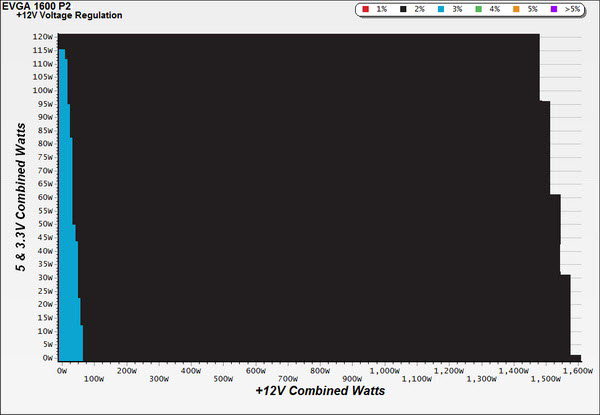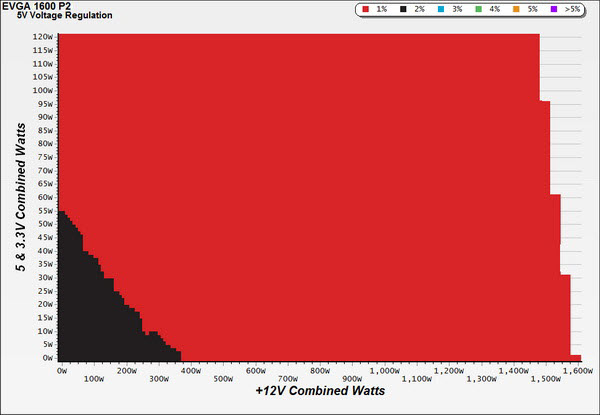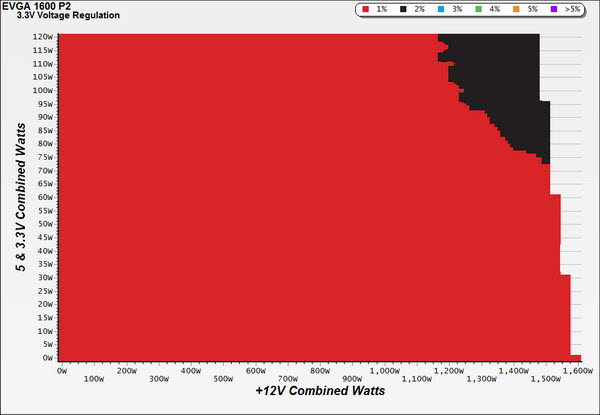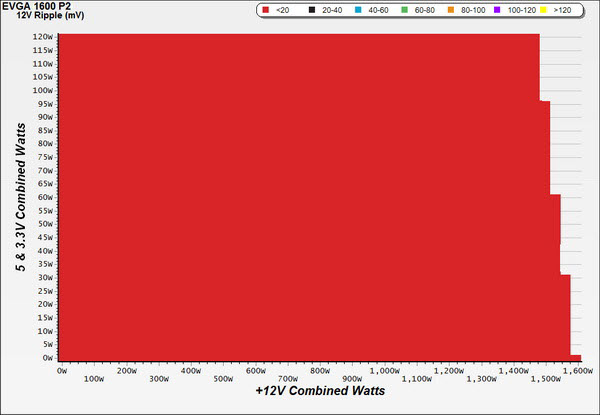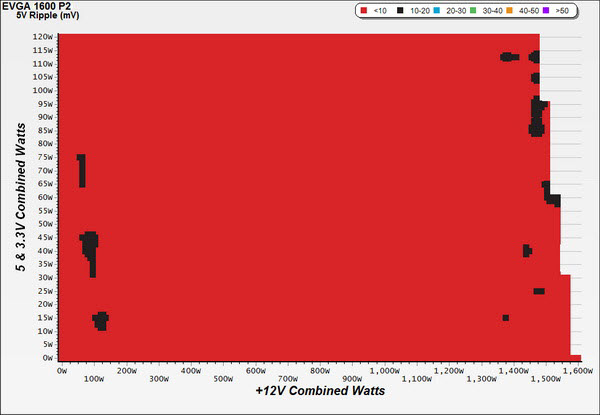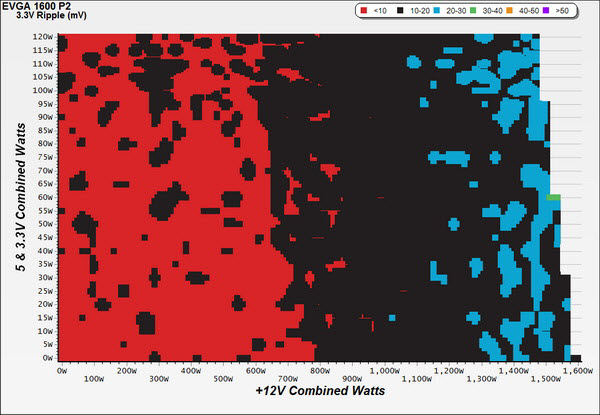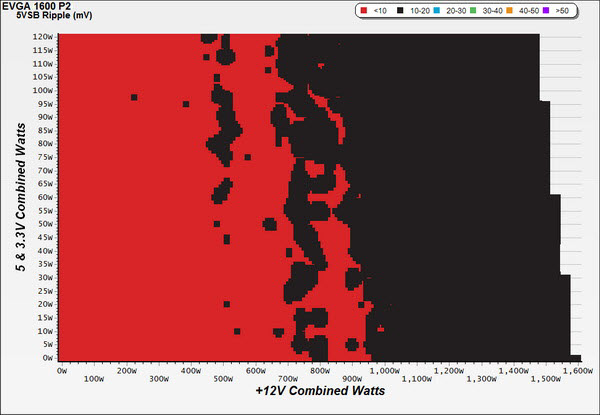EVGA SuperNOVA 1600 P2 Power Supply Review
EVGA recently introduced its flagship power supply, the SuperNOVA 1600 P2. In addition to monstrous capacity, it also features 80 PLUS Platinum efficiency, promises top performance levels and offers silent operation in semi-passive mode.
Why you can trust Tom's Hardware
Cross-Load Tests And Infrared Images
To generate the following charts, we set our loaders to auto mode through our custom-made software before trying over a thousand possible load combinations with the +12V, 5V and 3.3V rails. The load regulation deviations in each of the charts below were calculated by taking the nominal values of the rails (12V, 5V and 3.3V) as point zero.
+12V Load Regulation Chart
The deviation compared to the nominal value of this rail, which is exactly 12V according to the ATX spec, is within two percent in the worst case.
5V Load Regulation Chart
3.3V Load Regulation Chart
Efficiency Chart
For the most part, this unit's efficiency falls between 90 and 95 percent, which is excellent, given that we have a 1.6kW PSU on the bench that not only has a huge operating range but also increased energy losses compared to lower-capacity units. Despite this fact, Super Flower managed to extend the high-efficiency region from about 200 to around 1550W. For those who have 230V mains, the voltage efficiency is significantly higher, especially at increased loads.
+12V Ripple Chart
Ripple suppression on the +12V rail is perfect throughout the PSU's entire operating range.
5V Ripple Chart
We see good ripple suppression on the 5V rail, too, since ripple doesn't exceed 20mV in any case.
3.3V Ripple Chart
At 3.3V, ripple suppression isn't as good as on the rest of the rails. Generally speaking, though, and in comparison with the other PSUs in this category, it is good enough.
Get Tom's Hardware's best news and in-depth reviews, straight to your inbox.
5VSB Ripple Chart
Ripple suppression isn't as important at 5VSB. But we still want to see low ripple readings. The 1600 P2 doesn't let us down; this rail stays under 20mV of ripple.
Infrared Images
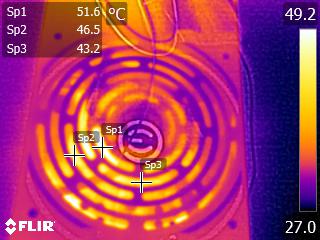
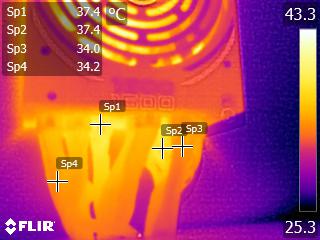
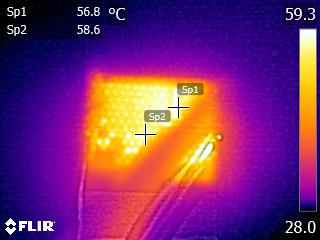
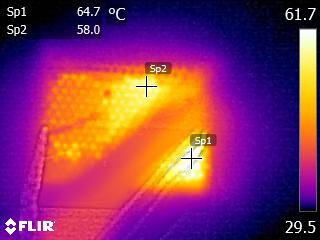
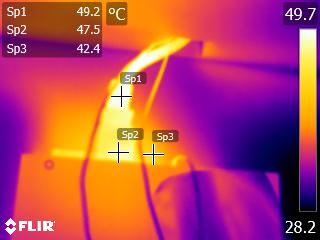
During the end of the cross-load tests, we took some photos of the PSU as it was being tested with our modified FLIR E4 camera that delivers 320x240 IR resolution (76,800 pixels).
Even at normal ambient temperature, the supply gets quite hot after many hours of testing at high loads, which was done to generate the above cross-load graphs. The power cord's temperature reached 50 C, because a lot of Amperes were passing through it. The modular cables also exhibited increased temperatures. These temperatures were safe, though, since the cables delivered high power levels for a prolonged period.
Current page: Cross-Load Tests And Infrared Images
Prev Page Efficiency, Temperatures And Noise Next Page Transient Response Tests
Aris Mpitziopoulos is a contributing editor at Tom's Hardware, covering PSUs.
-
damric Good review, but missing the hot box testing to see if this thing regulates and suppresses ripple at 50C as advertised.Reply -
Aris_Mp All tests were conducted at high ambient temperatures which during full load were above 47C. Only the Cross-Load tests were conducted at 28-30C.Reply -
Giannis Karagiannis Very detailed review indeed. There isn't really anything that could be covered and it is not. I don't think that there are many PSU manufacturers out there that can test their products so extensively.Reply -
Aris_Mp I had the opportunity to test the 2 kW model (from Super Flower) and it is indeed superb. But it will provide 2 kW only with 230 VAC input since a normal socket can deliver only up to 15 A of current.Reply -
damric Reply15234131 said:Too light for me I have the 2000w coming from Dabs when it comes to retail.
Where are you from that you need all that power? Cybertron? -
damric Reply15233469 said:All tests were conducted at high ambient temperatures which during full load were above 47C. Only the Cross-Load tests were conducted at 28-30C.
47C ambients? Must have been sweating your language, please off, or you are language, please me. -
damric Reply15234630 said:I'm going to power my Skynet build with it.
One day you need to show us a picture of everything. I've seen little snapshots here and there, but I'd like to see it all in one thread.
